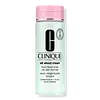What's inside
What's inside
 Key Ingredients
Key Ingredients

No key ingredients
 Benefits
Benefits

 Concerns
Concerns

 Ingredients Side-by-side
Ingredients Side-by-side

Water
Skin ConditioningPotassium Laureth Phosphate
EmulsifyingButylene Glycol
HumectantLauryl Hydroxysultaine
CleansingGlycerin
HumectantAcrylates/C10-30 Alkyl Acrylate Crosspolymer
Emulsion StabilisingHibiscus Sabdariffa Flower Extract
Skin ConditioningQuillaja Saponaria Bark Extract
CleansingCrataegus Monogyna Flower Extract
Skin ConditioningViola Tricolor Extract
EmollientCentella Asiatica Leaf Extract
Skin ConditioningMelaleuca Alternifolia Leaf Extract
PerfumingCynanchum Atratum Extract
Skin ConditioningPotassium Cocoyl Glutamate
1,2-Hexanediol
Skin ConditioningCaprylyl Glycol
EmollientCoco-Glucoside
CleansingSalicylic Acid
MaskingSodium Chloride
MaskingPropylene Glycol
HumectantSodium Cocoyl Glutamate
CleansingSodium Cocoyl Isethionate
CleansingAscorbic Acid
AntioxidantCitric Acid
BufferingMalic Acid
BufferingTartaric Acid
Buffering4-Terpineol
MaskingCapryloyl Salicylic Acid
ExfoliatingMadecassoside
AntioxidantMaltodextrin
AbsorbentSaccharide Hydrolysate
HumectantAsiaticoside
AntioxidantDimethyl Sulfone
SolventEthylhexylglycerin
Skin ConditioningPotassium Sorbate
PreservativeSodium Benzoate
MaskingParfum
MaskingLimonene
PerfumingLinalool
PerfumingWater, Potassium Laureth Phosphate, Butylene Glycol, Lauryl Hydroxysultaine, Glycerin, Acrylates/C10-30 Alkyl Acrylate Crosspolymer, Hibiscus Sabdariffa Flower Extract, Quillaja Saponaria Bark Extract, Crataegus Monogyna Flower Extract, Viola Tricolor Extract, Centella Asiatica Leaf Extract, Melaleuca Alternifolia Leaf Extract, Cynanchum Atratum Extract, Potassium Cocoyl Glutamate, 1,2-Hexanediol, Caprylyl Glycol, Coco-Glucoside, Salicylic Acid, Sodium Chloride, Propylene Glycol, Sodium Cocoyl Glutamate, Sodium Cocoyl Isethionate, Ascorbic Acid, Citric Acid, Malic Acid, Tartaric Acid, 4-Terpineol, Capryloyl Salicylic Acid, Madecassoside, Maltodextrin, Saccharide Hydrolysate, Asiaticoside, Dimethyl Sulfone, Ethylhexylglycerin, Potassium Sorbate, Sodium Benzoate, Parfum, Limonene, Linalool
Water
Skin ConditioningLauramidopropyl Betaine
CleansingCocamidopropyl Hydroxysultaine
CleansingSodium Chloride
MaskingSodium Laureth Sulfate
CleansingSodium Cocoyl Sarcosinate
CleansingTea-Cocoyl Glutamate
CleansingButylene Glycol
HumectantAloe Barbadensis Leaf Juice
Skin ConditioningPEG-120 Methyl Glucose Dioleate
EmulsifyingSucrose
HumectantSodium Coco Pg-Dimonium Chloride Phosphate
CleansingCitric Acid
BufferingHexylene Glycol
EmulsifyingPolyquaternium-7
Caprylyl Glycol
EmollientDisodium EDTA
Methylchloroisothiazolinone
PreservativeMethylisothiazolinone
PreservativePhenoxyethanol
PreservativeWater, Lauramidopropyl Betaine, Cocamidopropyl Hydroxysultaine, Sodium Chloride, Sodium Laureth Sulfate, Sodium Cocoyl Sarcosinate, Tea-Cocoyl Glutamate, Butylene Glycol, Aloe Barbadensis Leaf Juice, PEG-120 Methyl Glucose Dioleate, Sucrose, Sodium Coco Pg-Dimonium Chloride Phosphate, Citric Acid, Hexylene Glycol, Polyquaternium-7, Caprylyl Glycol, Disodium EDTA, Methylchloroisothiazolinone, Methylisothiazolinone, Phenoxyethanol
 Reviews
Reviews

Ingredients Explained
These ingredients are found in both products.
Ingredients higher up in an ingredient list are typically present in a larger amount.
Butylene Glycol (or BG) is used within cosmetic products for a few different reasons:
Overall, Butylene Glycol is a safe and well-rounded ingredient that works well with other ingredients.
Though this ingredient works well with most skin types, some people with sensitive skin may experience a reaction such as allergic rashes, closed comedones, or itchiness.
Learn more about Butylene GlycolCaprylyl Glycol is a humectant and emollient, meaning it attracts and preserves moisture.
It is a common ingredient in many products, especially those designed to hydrate skin. The primary benefits are retaining moisture, skin softening, and promoting a healthy skin barrier.
Though Caprylyl Glycol is an alcohol derived from fatty acids, it is not the kind that can dry out skin.
This ingredient is also used as a preservative to extend the life of products. It has slight antimicrobial properties.
Learn more about Caprylyl GlycolCitric Acid is an alpha hydroxy acid (AHA) naturally found in citrus fruits like oranges, lemons, and limes.
Like other AHAs, citric acid can exfoliate skin by breaking down the bonds that hold dead skin cells together. This helps reveal smoother and brighter skin underneath.
However, this exfoliating effect only happens at high concentrations (20%) which can be hard to find in cosmetic products.
Due to this, citric acid is usually included in small amounts as a pH adjuster. This helps keep products slightly more acidic and compatible with skin's natural pH.
In skincare formulas, citric acid can:
While it can provide some skin benefits, research shows lactic acid and glycolic acid are generally more effective and less irritating exfoliants.
Most citric acid used in skincare today is made by fermenting sugars (usually from molasses). This synthetic version is identical to the natural citrus form but easier to stabilize and use in formulations.
Read more about some other popular AHA's here:
Learn more about Citric AcidChances are, you eat sodium chloride every day. Sodium Chloride is also known as table salt.
This ingredient has many purposes in skincare: thickener, emulsifier, and exfoliator.
You'll most likely find this ingredient in cleansers where it is used to create a gel-like texture. As an emulsifier, it also prevents ingredients from separating.
There is much debate on whether this ingredient is comedogenic. The short answer - comedogenic ratings don't tell the whole story. Learn more about comegodenic ratings here.
The concensus about this ingredient causing acne seems to be divided. Research is needed to understand if this ingredient does cause acne.
Scrubs may use salt as the primary exfoliating ingredient.
Learn more about Sodium ChlorideWater. It's the most common cosmetic ingredient of all. You'll usually see it at the top of ingredient lists, meaning that it makes up the largest part of the product.
So why is it so popular? Water most often acts as a solvent - this means that it helps dissolve other ingredients into the formulation.
You'll also recognize water as that liquid we all need to stay alive. If you see this, drink a glass of water. Stay hydrated!
Learn more about Water